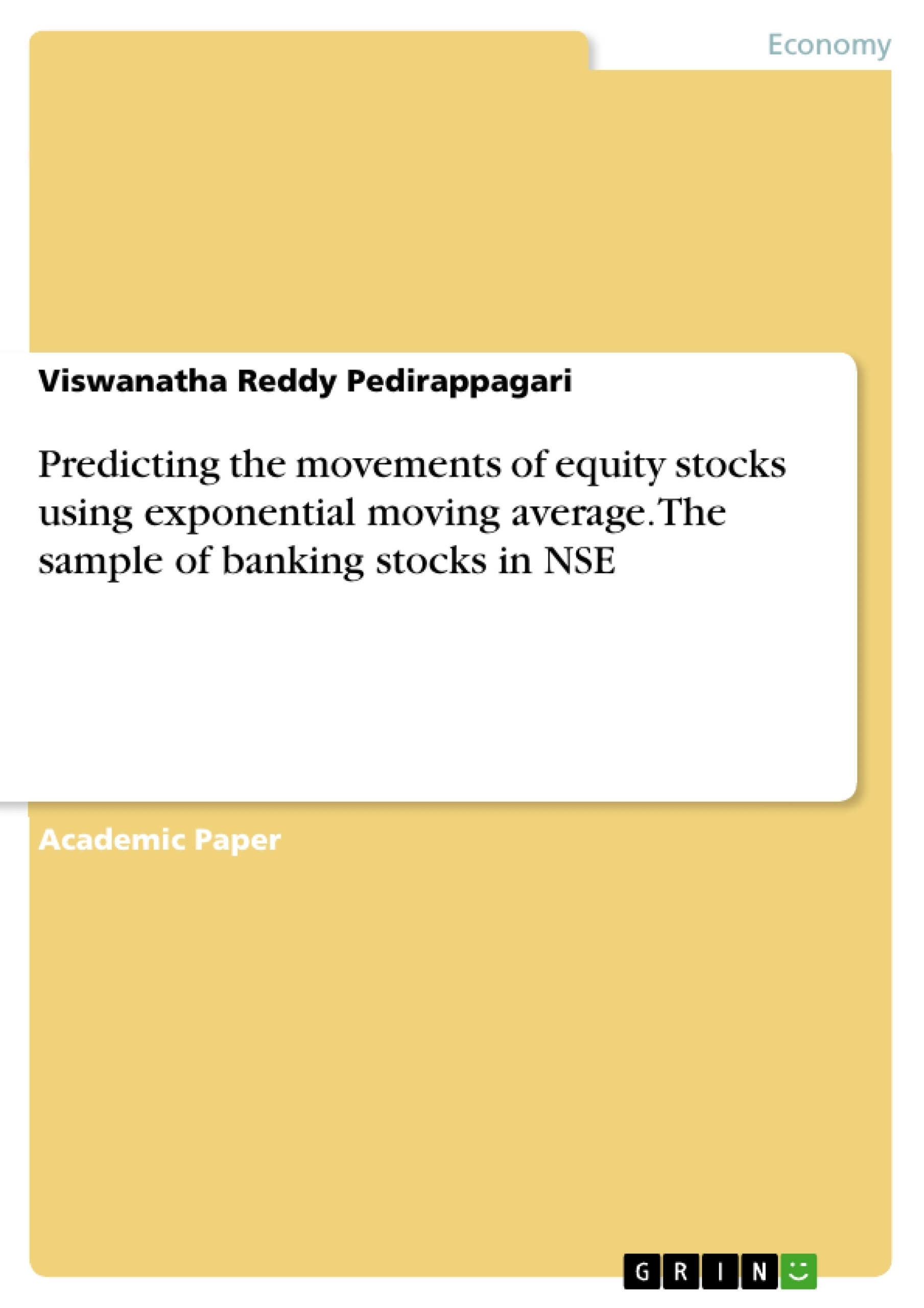The aim of the study is to discover the validity of the Exponential Moving Average (EMA) for short term investments. Here we collected the closing prices data of HDFC Bank, ICICI Bank, Kotak Bank, State Bank of India and Punjab National Bank which was listed in National Stock Exchange (NSE) for the period of 1st April 2019 to 1st October 2019. Here we identified that the Exponential Moving Average (EMA) technical tool will able to generate the reliable and valid results which can make to choose right equity stock for short term investments. The study concludes that exponential Moving Average (EMA) will competent to generate the valid results but investor should not only depends Exponential Moving Average (EMA) and also verifies with other technical indicators
Inhaltsverzeichnis (Table of Contents)
- Abstract
- Introduction
- Exponential Moving Average
- Research Methodology
- Trading Strategies
- Strategy 1
- Strategy 2
- Strategy 3
- Strategy 4
- Empirical Results
Zielsetzung und Themenschwerpunkte (Objectives and Key Themes)
The study aims to determine the validity of the Exponential Moving Average (EMA) for short-term investments in the Indian stock market. The study focuses on a sample of five banking stocks listed on the National Stock Exchange (NSE).
- Analyzing the effectiveness of EMA in predicting equity stock movements
- Identifying potential trading strategies based on EMA signals
- Evaluating the reliability of EMA in generating profitable returns for short-term investments
- Exploring the role of EMA in navigating market volatility and uncertainty
- Assessing the importance of combining EMA with other technical indicators for informed decision-making
Zusammenfassung der Kapitel (Chapter Summaries)
- Abstract: This chapter presents a concise overview of the study's purpose, scope, and findings. It highlights the use of EMA as a technical tool for short-term investment decisions.
- Introduction: This section introduces the concept of technical analysis and its role in navigating stock market volatility. It also discusses the limitations of traditional moving averages and the potential of EMA for improved market insights.
- Exponential Moving Average: This chapter defines the EMA and explains its formula, emphasizing its ability to give more weight to recent prices for a more responsive analysis. The chapter also discusses the importance of smoothing factors and addresses potential challenges in calculating initial EMA values.
- Research Methodology: This section describes the data collection process for the study. It clarifies the selection of five banking stocks from the NSE and the time frame for data collection (1st April 2019 to 1st October 2019).
- Trading Strategies: This chapter explores four trading strategies based on EMA signals. It outlines the criteria for buy and sell signals based on the crossing of stock prices above and below the EMA. It also discusses the use of multiple EMA lines for identifying golden crosses and dead signals.
Schlüsselwörter (Keywords)
The primary keywords and focus topics of this study include exponential moving average, technical analysis, trading strategy, Indian stock market, short-term investments, and equity stock movements. The research explores the application of EMA for identifying market trends and generating investment signals within the context of the Indian stock market.
- Quote paper
- Viswanatha Reddy Pedirappagari (Author), 2019, Predicting the movements of equity stocks using exponential moving average. The sample of banking stocks in NSE, Munich, GRIN Verlag, https://www.grin.com/document/507070



